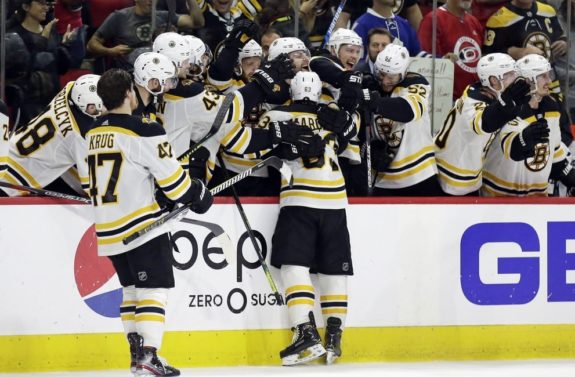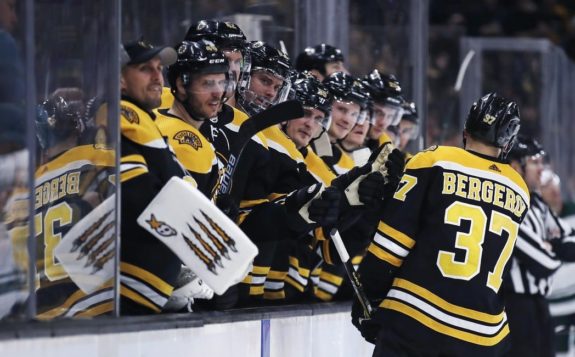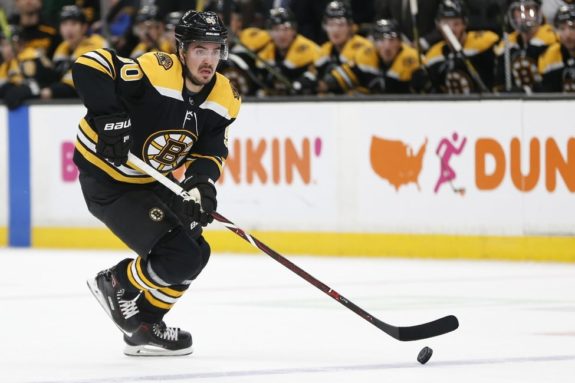With the Boston Bruins’ four-game sweep of the Carolina Hurricanes in the Eastern Conference Final, the Stanley Cup Final is returning to TD Garden for the first time since 2013.
The road to the Final has been an interesting one for the Bruins, who once again slipped by the Toronto Maple Leafs in seven games in the first round before finishing off a Cinderella story Blue Jackets team that was coming off of a sweep of a historic Tampa Bay Lightning squad.

Any team that makes a run this deep into the postseason needs a complete performance up and down the roster, and the Bruins have been fortunate enough to have just that. While the dominant top-line and the stellar performance from Tuukka Rask have led the charge, the Bruins’ depth has proven to be yet another difference-maker throughout the first three rounds of the playoffs. That will need to continue if the Bruins are going to bring Boston its third Big-Four sports championship in the past year.
The Usual Suspects
Naturally, the first step in achieving top-to-bottom production is getting production from the first line. Throughout the postseason, that hasn’t been much of an issue for the Bruins.
The talents of the “Perfection Line” of Patrice Bergeron, David Pastrnak, and Brad Marchand were on display in the Bruins’ decisive Game 4 victory over the Hurricanes, with Boston’s touted trio accounting for all four of the team’s goals after a relatively quiet Game 3.
Of course, production from the first line is nothing of a surprise for the Bruins. Bergeron, Pastrnak, and Marchand have combined for 22 goals this postseason, equaling 38.6 percent of Boston’s postseason total.

Granted, many of those goals have come on the power play, which was nothing short of dominant in the Bruins’ sweep of the ‘Canes. The Bruins went 7-for-15 on the man-advantage in the series, potting at least one power play goal in each game.
Boston’s power play will likely see some stiffer competition in the Stanley Cup Final, as the San Jose Sharks (51-for-63, 81.0 percent penalty kill) and St. Louis Blues (29-for-38, 76.3 percent penalty kill) both boast stronger penalty kills than the Hurricanes (35-for-51, 68.6 percent). Still, the Bruins will expect their top line to produce when the opportunity knocks.
Of course, Boston’s usual suspects when it comes to big-game scoring goes beyond the first line. Playoff David Krejci has become something of a legend in Boston, as the often-overshadowed second-line center is known for kicking things into a higher gear for the postseason. To date, Krejci has 101 points in 125 postseason games in his career.
This postseason has been no different, with Krejci once again stepping on the gas for the Bruins in their quest for the Cup. The Czech has tallied at least a point in 13 of Boston’s 17 postseason games so far, totaling four goals and ten assists.
Top-to-Bottom Production
Without Boston’s regular scorers, the Bruins would not be headed to their third Stanley Cup Final this decade. On the flip side, the go-to producers wouldn’t be where they are without a little help from their friends.
Through the first three games of the Eastern Conference Final, Boston’s top line was relatively quiet during even-strength play, despite their power play success. Bergeron, Pastrnak, and Marchand didn’t bury a single even-strength goal for the Bruins in Games 1-3. If you didn’t notice that, you can thank Boston’s depth players who stepped up to fill the void. In those three games, ten goals were scored by players who typically play in the bottom six forward group or bottom defensive pairing.
That kind of production has been a difference -maker for the Bruins all postseason.

Up front, Boston’s trade deadline acquisitions have received well-deserved praise for the roles they’ve played. Charlie Coyle and Marcus Johansson have revamped the third line, and both sit among Boston’s top seven producers this postseason. Coyle has notched six goals and six assists while appearing in all 17 playoff games, while Johansson has three goals and six assists in 15 games.
Below them (on the stat sheet), Jake DeBrusk and Danton Heinen have been quietly producing, with seven points apiece. Meanwhile, Sean Kuraly has continued his streak of scoring timely goals (he has five points in 13 playoff games), and even David Backes, who notched just 20 points in 70 games this regular season, has a pair of goals and three assists to his name in just 11 playoff games.
On the back end, Torey Krug leads Bruins defensemen with 12 points, while former Boston University standouts Matt Grzelcyk and Charlie McAvoy each have seven points to their name.
From top to bottom, only one Bruins skater that has dressed for a postseason game has yet to find the scoresheet. That’s John Moore, who has suited up for five playoff games. Meanwhile, six players have hit double-digit point totals, while thirteen different players have tallied at least five points.
Clearly, depth has not been an issue for this edition of the Bruins, and that’s a promising sign as we approach the Stanley Cup Final. On the game’s biggest stage, it is oftentimes the depth players, and not the superstars, who emerge as heroes in the Stanley Cup Final. It’s been a mightily impressive ride for Boston’s depth players, but it’ll take one more strong series to immortalize them as champions.